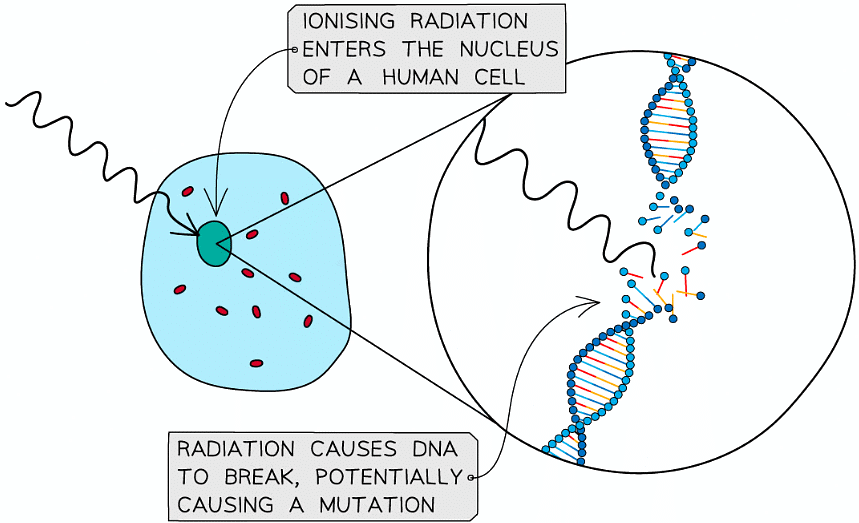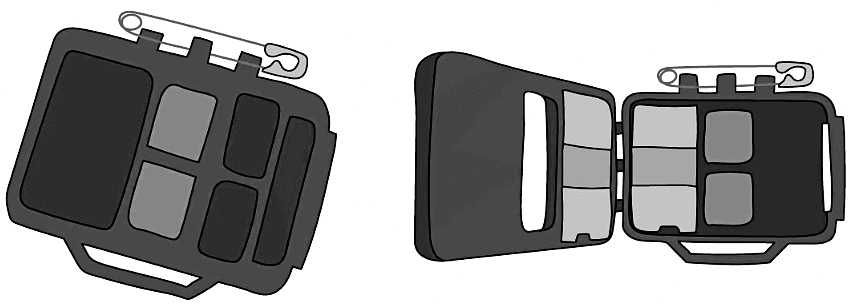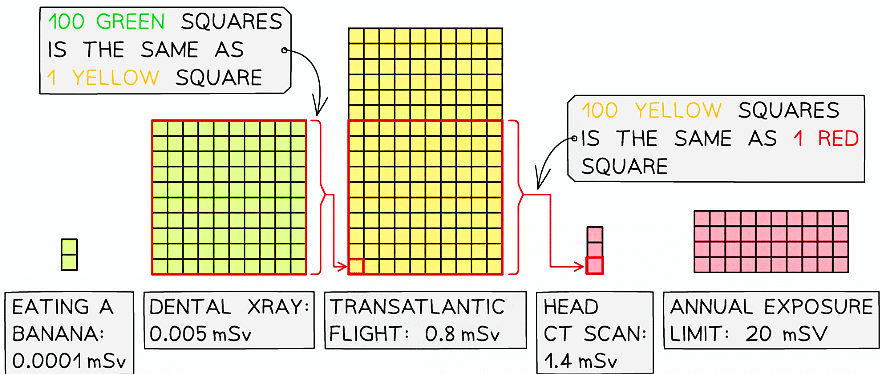Risks of Radioactivity | Chemistry for EmSAT Achieve PDF Download
Introduction
Ionizing radiation poses potential dangers to human cells and tissues. Here's how it can lead to harmful effects:
- Damage to DNA: Ionizing radiation can ionize the atoms within a DNA strand, resulting in DNA damage. When the DNA is damaged, the affected cell may either die or undergo mutations when it attempts to repair itself.
- Cell Mutations and Tumor Formation: If the DNA damage is not repaired correctly and a mutated cell is able to replicate itself, it can lead to the formation of a tumor. This process exemplifies the development of cancer, which is a significant risk associated with exposure to radiation.
It is important to note that the harmful effects of radiation exposure depend on various factors such as the dose, duration of exposure, and the type of radiation involved. Strict safety measures and regulations are implemented to minimize radiation exposure and mitigate potential risks to human health.

Other severe symptoms can manifest as a result of acute radiation exposure, including skin burns that resemble severe sunburn. Additionally, radiation has the potential to decrease the quantity of white blood cells in the body, increasing an individual's vulnerability to infections. Consequently, it is crucial to exercise caution when dealing with radioactive sources.
Ensuring Safe Handling of Radiation
To minimize the risks associated with radiation exposure, it is essential to follow certain safe practices:
- When not in use, radioactive sources should be securely stored in a shielded container, such as a lead-lined box.
- When handling radioactive materials, it is crucial to wear gloves and use tongs to maintain distance from them.
- Depending on the situation, it may be necessary to wear protective clothing to prevent contamination of the body.
- The duration of using a radioactive source should be limited to reduce the potential for exposure.
Regulating Radiation Exposure
Given the detrimental effects of radiation, it is important to regulate human exposure:
- The amount of radiation absorbed by a person is referred to as the dose and is measured in sieverts (Sv).
- One sievert represents a substantial dose of radiation capable of causing acute radiation poisoning.
- On average, individuals typically receive around 3 mSv (0.003 Sv) of radiation per year.
- To safeguard against excessive exposure, the dose received from various activities is carefully monitored.
- Dosemeters are devices used to measure the amount of radiation in specific areas and are often worn by radiographers or individuals working with radiation.

A dosemeter, or radiation badge, can be worn by a person working with radiation in order to keep track of the amount of radiation they are receiving
Variations in Exposure
- The level of radiation an individual is exposed to can be influenced by factors such as occupation, lifestyle, and location.
- Certain regions in the world have higher background radiation due to their proximity to radiation sources.
- Individuals working with nuclear radiation experience higher levels of radiation exposure.
- In the United Kingdom, the maximum permissible annual dose for employees in the nuclear industry is set at 20 mSv.
- The diagram provided below illustrates a comparison of radiation doses received from various activities.

All living things emit a small amount of radiation: the amount of radiation within a banana is tiny, and not at all dangerous!
 |
Download the notes
Risks of Radioactivity
|
Download as PDF |
Proper Disposal of Radioactive Waste
- When an isotope possesses a long half-life, its decay process occurs at a slower rate. Even though it may not emit a significant amount of radiation, it remains radioactive for an extended period.
- Substances with long half-life values pose an extended risk of contamination.
- To prevent the release of such radioactive waste into the environment, it is buried underground for disposal.

|
193 videos|226 docs|153 tests
|















